My husband and I first set foot in Narni in 2022, and the cats were one of the first things we noticed. What is it about a cat that in an instant renders a scene both cosier and more sophisticated?
Not that Narni really needs this kind of help. Its winding Medieval streets and dramatic hilltop setting make it feel endlessly magical. Around every corner you find a new, perfect tableau. But the cats lend a certain something extra, a timelessness, a feeling that the soul of the city resides not only in arches and cobblestones, but in every living, breathing inhabitant.
The ancestors of these very cats have likely ruled the city for centuries, if not millennia. How many cat generations could we count back to the construction of the fourteenth century fortress on the hill? Or the Roman conquest in 299 C.E.?
No wonder one gets a sense that whatever their human neighbours might think, the cats are secretly running this show. They preside in majesty over each stone doorstep, every patch of ephemeral late-summer sun.
That trip to Umbria in 2022 was kind of a pandemic thing. I hadn’t thought of opening a bookshop yet. I was mostly thinking of running away. When we moved to Amsterdam in 2015, we downsized from our four-bedroom Florida house to a 775 square-foot Amsterdam apartment. Housing prices in the city being what they were (they’re much worse now), it was what we could afford.
And I love our little Amsterdam house. It’s on the ground floor of a light-filled outside corner in a bustling neighbourhood just southwest of Vondelpark, Amsterdam’s version of Central Park. The neighbourhood is one of my favourite things about our house, in fact.
When we were convincing ourselves that we could fit four people and a dog into such a small apartment, our best argument was that all the wonderful public spaces nearby would be an extension of our living space. No yard for the kids and dog to run around? No problem. The grassy expanses of Vondelpark were only a few blocks away. No space to fit guests at our dining table? We could meet people for brunch or dinner at dozens of wonderful cafés and restaurants in walking distance. Tiny kitchen with no cupboard, refrigerator or freezer space to spare? We could pop out anytime for a carton of milk at one of no fewer than five nearby grocery stores.
You get the idea. But covid put a massive dent in all of this. During lockdown, we became aware all over again of just how small our house really was. Our favourite café down the street, which we’d been accustomed to refer to as our “second living room” closed, as did every other shared space that made us feel like a part of the cosmopolitan village that is Amsterdam.
Even after the local parks reopened, they were full at all hours of desperate parents who lived in small apartments like ours, trying to entertain their stir-crazy kids. And sure, the opera ballet and the museums and all Amsterdam’s other cultural institutions were trying to put what they could online, but sitting in our tiny house in front of yet another screen didn’t quite feel the same as an evening out.
And I guess it all led to me falling a little out of love with the city. Not Amsterdam specifically, but urban life in general. It’s like all of a sudden I could feel the population density pressing in from every side. And while I love how Dutch people plant flowers everywhere, there’s nowhere I could easily reach from Amsterdam that really felt like nature. I started obsessing over my fantasy of leaving the city for somewhere smaller, slower, greener. Somewhere beautiful. And what more beautiful place to chase than Italy?
Of course, I’d never not been dreaming of Italy. But after trying to move there in our twenties with two small children and uncertain employment, we’d set it aside as a dearly-loved ideal. We hoped we’d reach Italy someday, but had no idea how. Ironically, it was the pandemic that made our Italian dream start to feel possible again.
My husband was hired on at a new company in the depths of lockdown, when nobody was going into the office. It was his first taste of fully remote work in a corporate setting, and he vowed he was never going back. To this day, he conducts a training every month or two in office, but mostly he works from home at the desk we carved out of a tiny corner in our Amsterdam house. Which led to us think, if he can work from home in Amsterdam, why not Italy?
Still, even in a post-pandemic world where remote work is tried, tested, and much more accepted than heretofore, a lot of employers still care where you are. As in, they take you more seriously if you can say you live “near Rome,” as opposed to “in a picturesque but remote village in the mountains, probably with sketchy wifi.”
Therefore, we settled on a little triangle of southern Umbria and northern Lazio: a dozen different towns within an hour and a half of Rome.
We were searching for somewhere beautiful, and big enough to have a café or two and a bit of life. For the rest, we left it pretty open. We wanted our chosen town to have that ineffable little something you don’t even know you’re looking for. We wanted to fall in love. Which one could easily do with any number of cities in Italy.
However, in case you’re curious and/or plotting your own escape, these are the towns that made our list: Orvieto, Aqualoreto, Solomeo, Aquasparta, San Gemini, Spoleto, Spello, Amelia, Bomarzo, Viterbo, Cesi, Terni, Orte, Lugnano in Teverino. And Narni.
The day we chose to visit Narni was hot and still, as August days in Umbria tend to be. I recall arriving just during lunchtime, so the streets were empty and everything was closed, a state of affairs that lends its own magic to a place.
The first thing we did (as tourists often do), was head up the hill towards La Rocca Albornoz, Narni’s imposing city fortress. It’s located at the southern tip of Narni, but a friend last week told us that real Narnese (Narnians) refer to that direction in the city as North, because it’s so distinctly uphill. Which makes a certain kind of sense, but is also incredibly confusing.
The reason I remember going that way so clearly is because we walked straight up the beautiful street where we recently bought our house, and will turn the cellar into the Wardrobe Bookshop. Every day, as I watch tourists toiling up the hill toward La Rocca, I imagine them pausing at the inviting open door of the bookshop and then wandering in to take a rest in a comfy chair while paging through a book.
On that hot day in August, there was as yet no cool bookshop for us to rest our feet. We trudged up the hill, thinking of cool water. As I took in the beauty of that narrow street, I didn’t stop to consider how little room the stone walls leave to flee if you’re attacked. Which becomes somewhat crucial at this point in the story.
I had our little dog Lyra on a leash beside me. As we passed one of the distinctive front porch stairwells, a black cat sallied down those stairs in full attitude of war, and made straight for my little dog. She always gives cats a wide berth, since most of them significantly outweigh her. But this one was determined, and there was nowhere to run.
I scooped up Lyra, and as I ran panting up the hill with her, Tony heroically put himself between us and the cat. Lyra and I escaped unscathed, but when the dust settled, Tony was left with this.
To this day, he carries a scar—the calling card of the cats of Narni. Fortunately, by the time we made it down from the hill, the pharmacy had reopened after lunch, and we were able to acquire some antiseptic, so there were no lingering ill effects of this misadventure. But ever since then, when I’m out with Lyra I give the cats of Narni an especially wide berth. They are, and remain, the unchallenged rulers of the city.





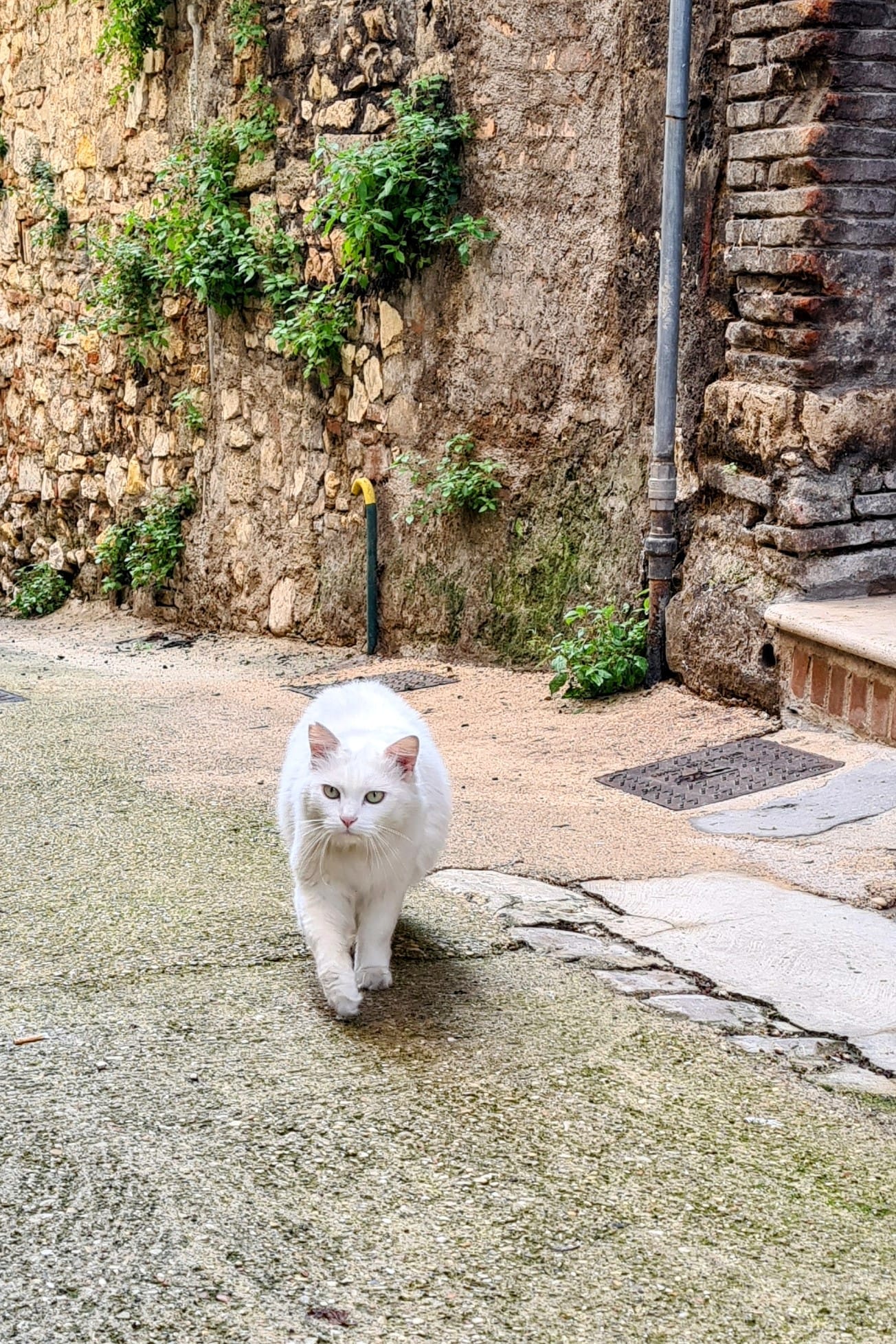
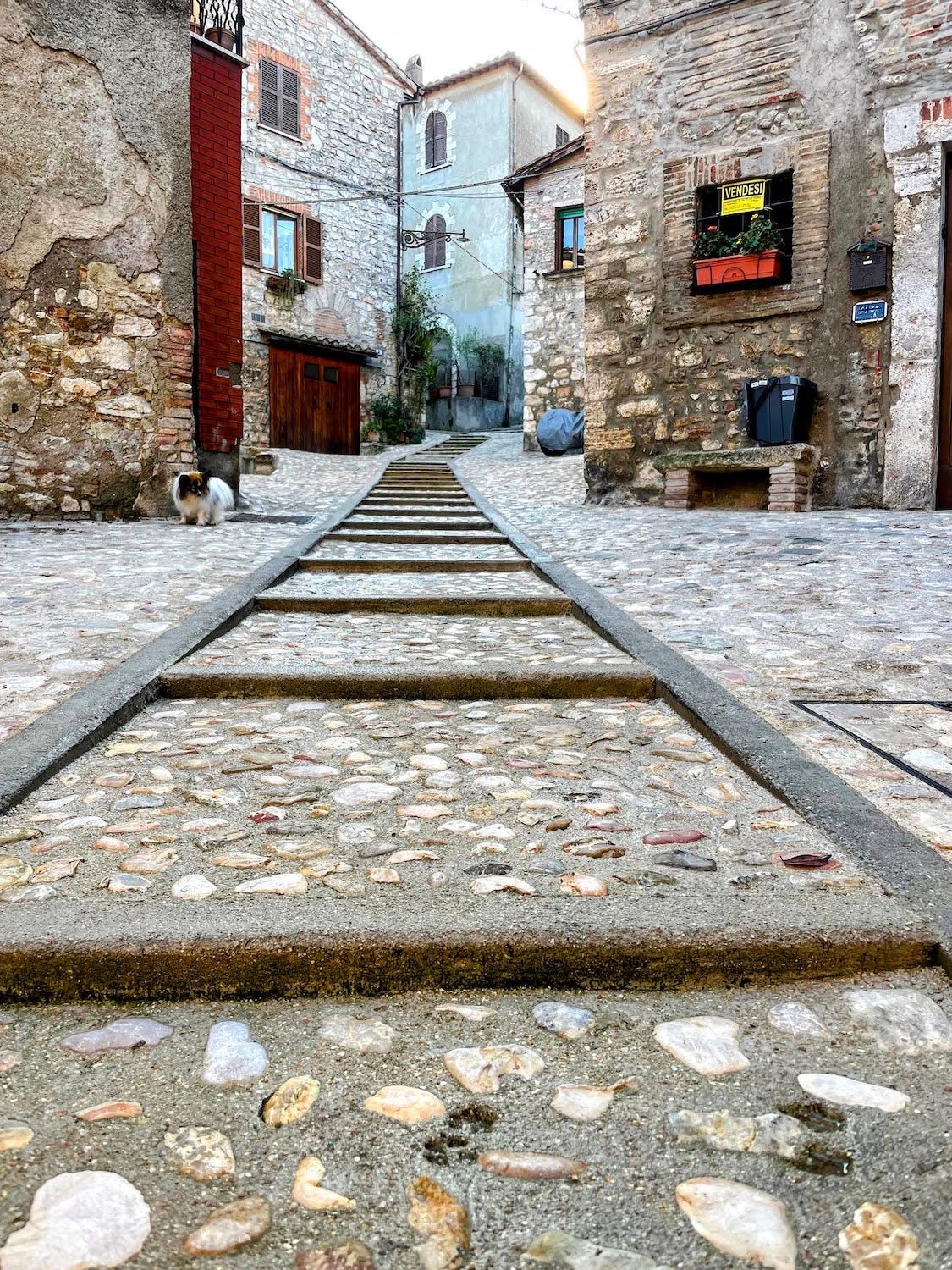
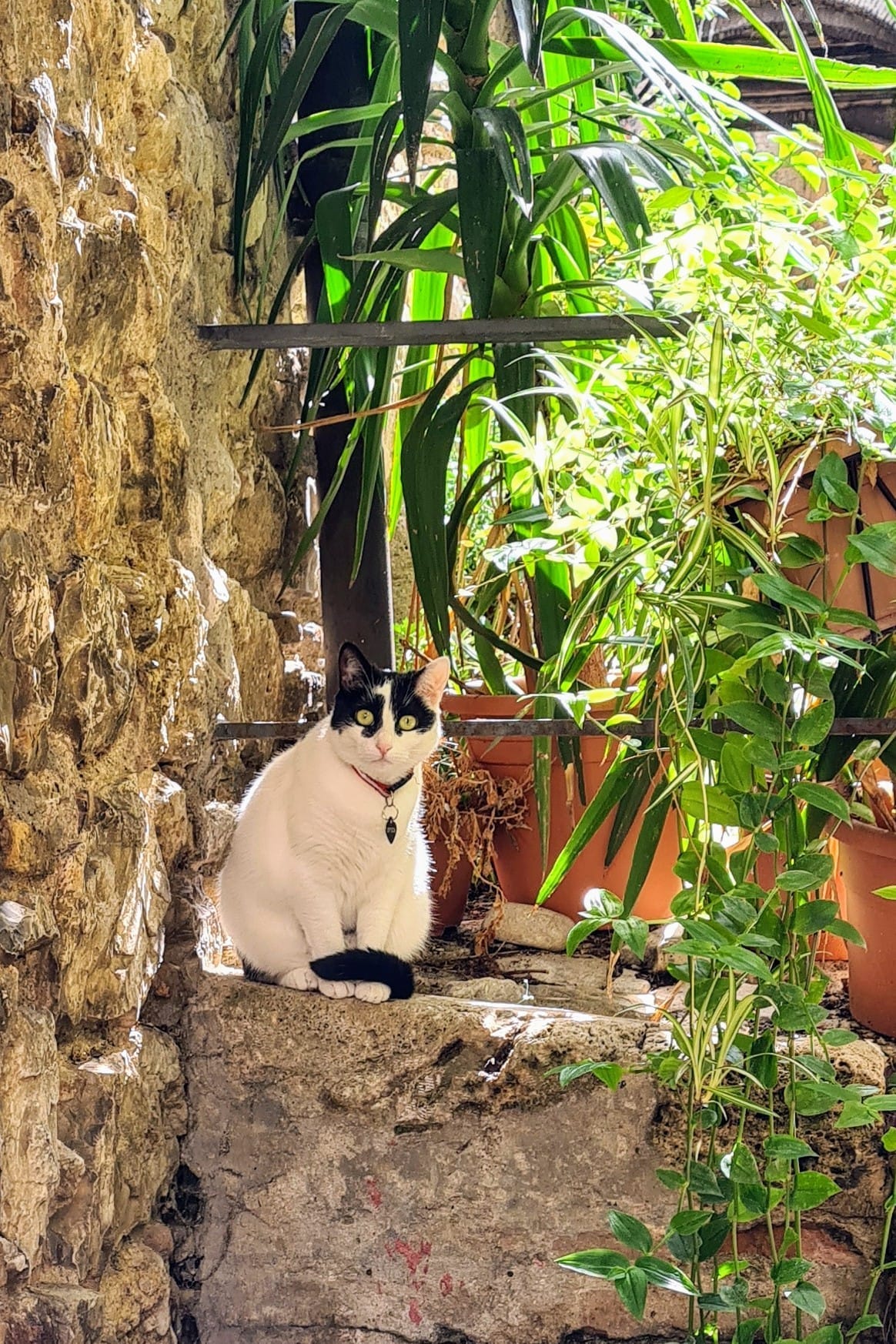







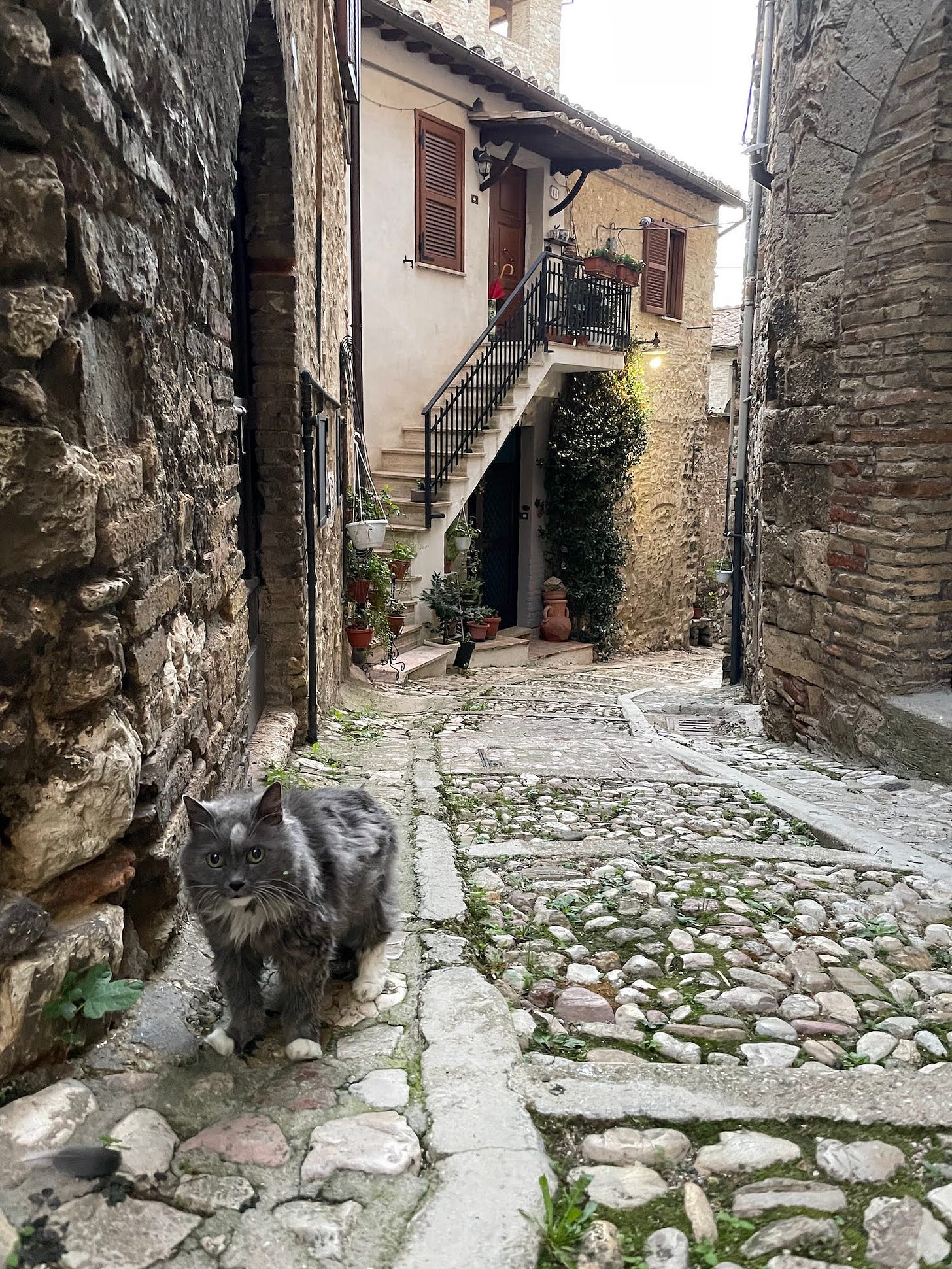
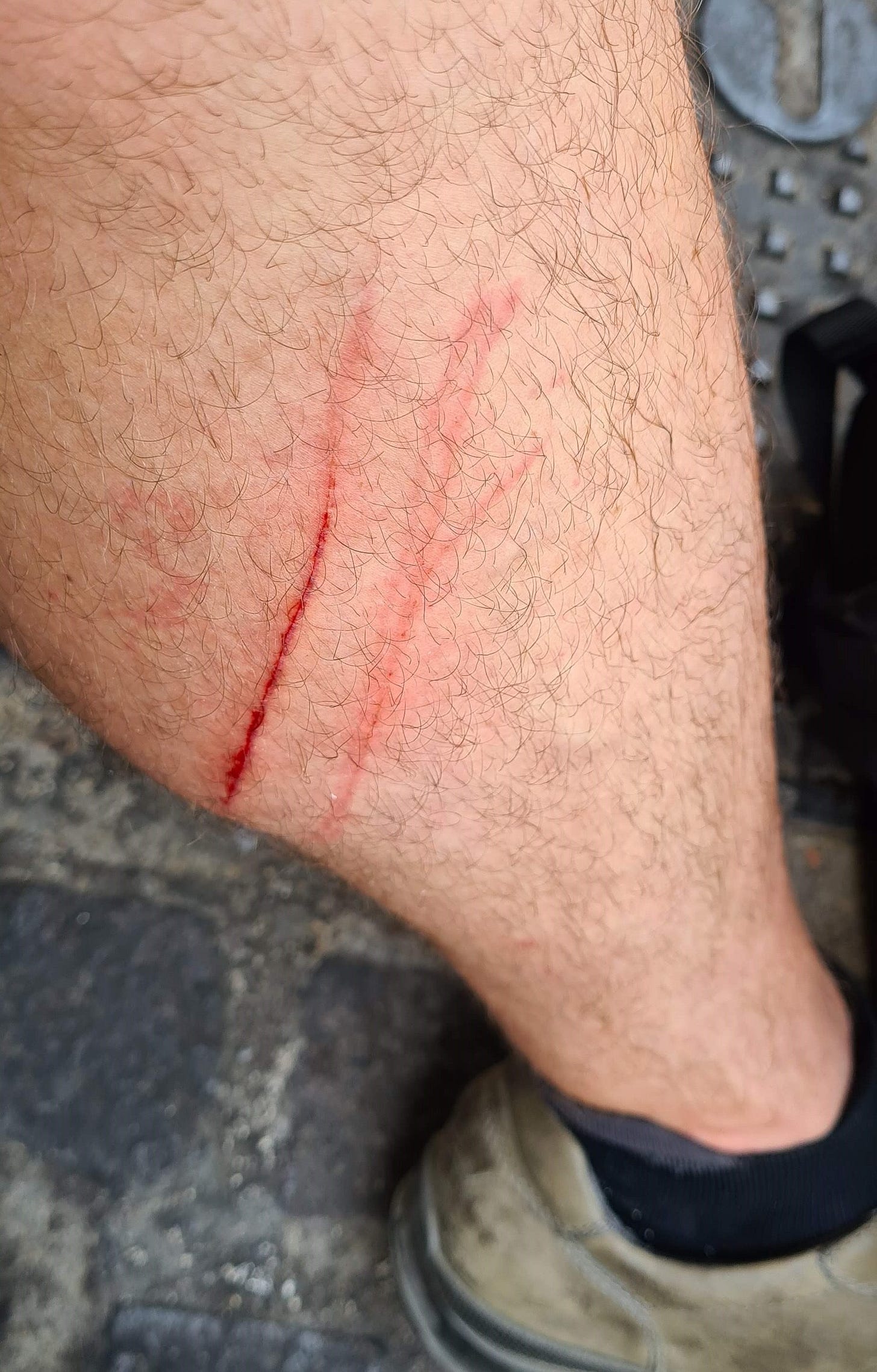
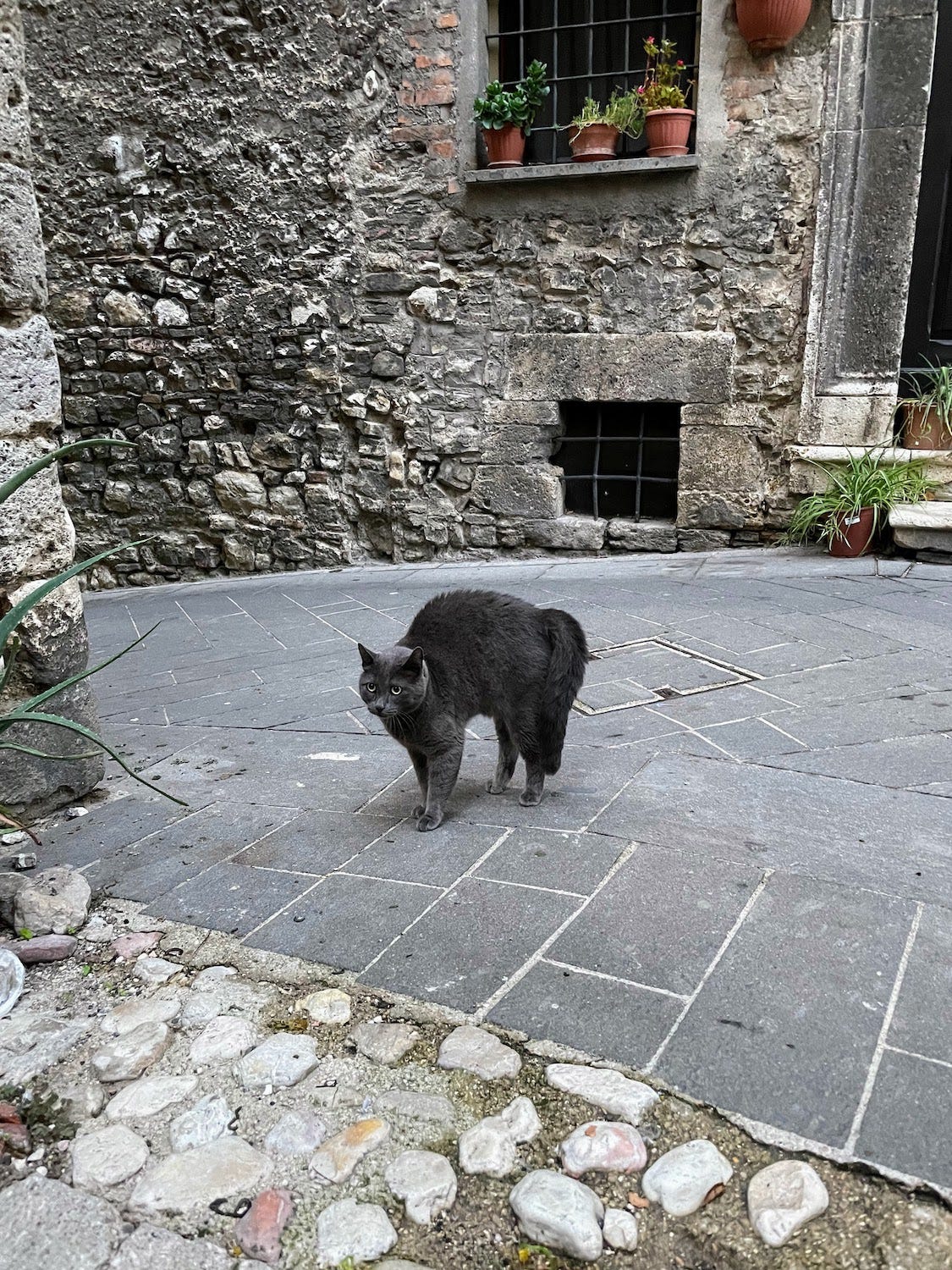
Very charming. I hope your dog is alright.
Hang on… You’re moving to Narni to open a bookshop?
I live here. Been here 3 years. I’ve got a big flat near the Rocca Albernoz.
Ask me anything.
(I have to warn you that Narni tends to kill small businesses. Anything requiring a shop front.)